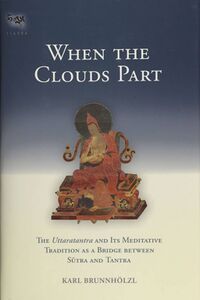Explore: Difference between revisions
((by SublimeText.Mediawiker)) |
((by SublimeText.Mediawiker)) |
||
| Line 302: | Line 302: | ||
</div> | </div> | ||
<div class="col-lg-3"> | <div class="col-lg-3"> | ||
<div class="sub-section-header mt-4 mt-lg-2 mb- | <div class="sub-section-header mt-4 mt-lg-2 mb-4 border-bottom-rightfade">Translators</div> | ||
<div class="d-flex justify-content-center flex-wrap"> | <div class="d-flex justify-content-center flex-wrap"> | ||
{{PeopleMentionedMedia|People/Mathes,_K.|showdates=no|height=auto|margins=m-0}} | {{PeopleMentionedMedia|People/Mathes,_K.|showdates=no|height=auto|margins=m-0}} | ||
{{PeopleMentionedMedia|People/Querl,_K.|showdates=no|height=auto|margins=m-0}} | {{PeopleMentionedMedia|People/Querl,_K.|showdates=no|height=auto|margins=m-0}} | ||
</div> | </div> | ||
<div class="sub-section-header mt-4 mt-lg-2 mb- | <div class="sub-section-header mt-4 mt-lg-2 mb-4 border-bottom-rightfade">Source text</div> | ||
{{PageTileQuery | {{PageTileQuery | ||
|query=[[Books/'Gos_Lo_tsā_ba_gZhon_nu_dpal's_Commentary_on_the_Ratnagotravibhāgavyākhyā]] | |query=[[Books/'Gos_Lo_tsā_ba_gZhon_nu_dpal's_Commentary_on_the_Ratnagotravibhāgavyākhyā]] | ||
Revision as of 15:56, 31 July 2020

See all presentations
Klaus-Dieter Mathes
Ngawang Jorden
Jacqueline Stone
'Gos Lo tsā ba gZhon nu dpal's (1392–1481) extensive commentary on the Ratnagotravibhāga (RGV), the standard Indian treatise on the doctrine of buddha nature, provides a rich source of information about the early transmission of the Tibetan Buddhist canon. In it we find not only a complete 15th-century Tibetan version of the RGV (including Asaṅga's commentary), but also a critical philological review of the earlier Tibetan canonical translation by rNgog Blo ldan shes rab (1059–1109) against the background of the original Sanskrit about which 'Gos Lo tsā ba was exceptionally knowledgeable. 'Gos Lo tsā ba's study, rife with quotations from a great variety of texts from both the bKa' 'gyur and bsTan 'gyur, thus offers representative samples from all strands of Indian Buddhist literature.
'Gos Lo tsā ba's Gyülama commentary is not only the first available commentary belonging to the meditation tradition (Tib. sgom lugs) of the Maitreya works, but also includes a tradition of teaching Mahāmudrā based on the sūtras and the works of Maitreya, a tradition that 'Gos Lo tsā ba traces back to the tantric ryadeva, Jñānakīrti (10th/11th cent.), Maitrīpa (986–1063), Pha dam pa Sangs rgyas, and rGod tshang ras pa (1189–1258). Although 'Gos Lo tsā ba received a full-fledged bKa' gdams pa education, he remained unbiased toward other Tibetan schools and received instructions from the most important masters of his time, including Tsong kha pa (1357-1419), whose analytical approach toward the Buddhist doctrine impressed him greatly. Particularly remarkable is 'Gos Lo tsā ba's observation that Tsong kha pa taught a distinction between provisional and definitive meaning based on the Gyülama.
Ringu Tulku
Tokpa Tulku
I.28
རྫོགས་སངས་སྐུ་ནི་འཕྲོ་ཕྱིར་དང་། །
དེ་བཞིན་ཉིད་དབྱེར་མེད་ཕྱིར་དང་། །
རིགས་ཡོད་ཕྱིར་ན་ལུས་ཅན་ཀུན། །
རྟག་ཏུ་སངས་རྒྱས་སྙིང་པོ་ཅན། །
Since suchness is undifferentiable,
And because of the disposition,
All beings always possess the buddha heart.
संबुद्धकायस्फरणात् तथताव्यतिभेदतः
गोत्रतश्च सदा सर्वे बुद्धगर्भाः शरीरिणः
佛法身遍滿 真如無差別
皆實有佛性 是故說常有
Click to view all verses





